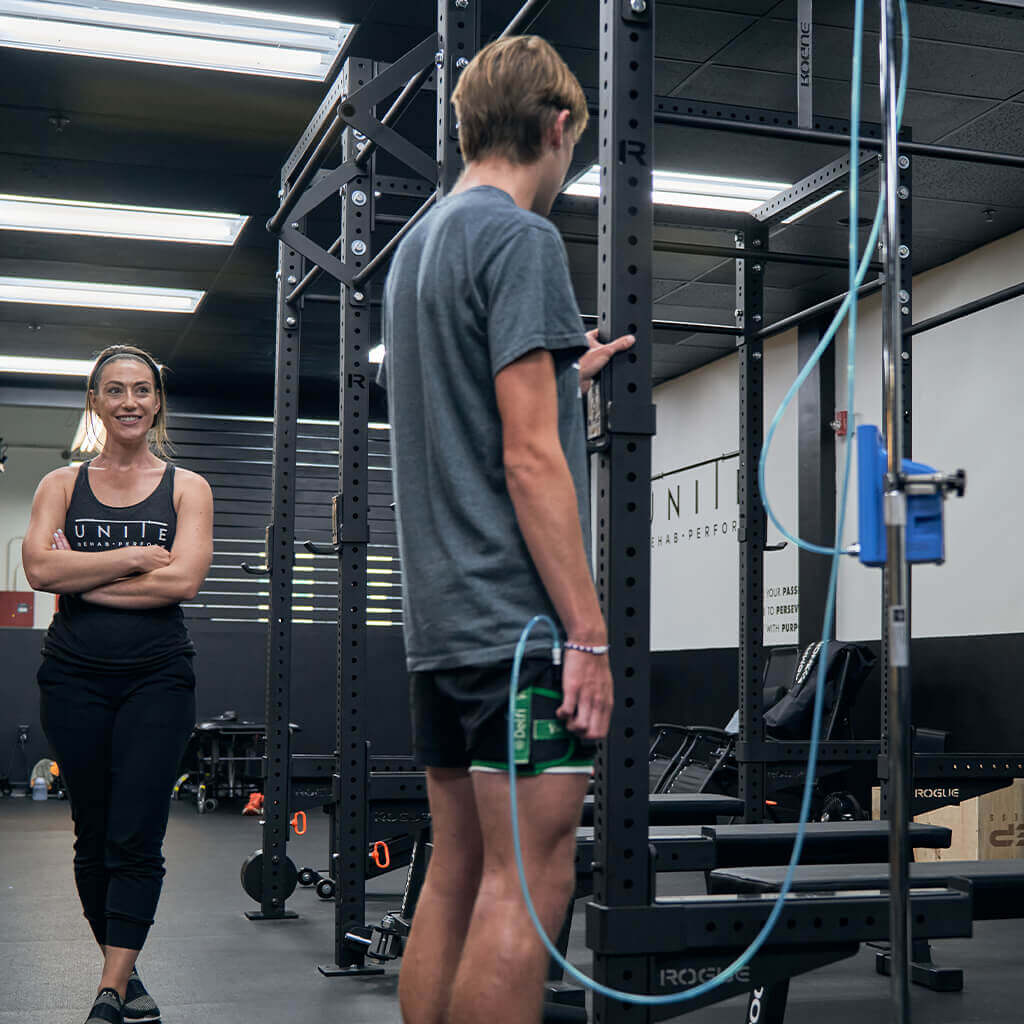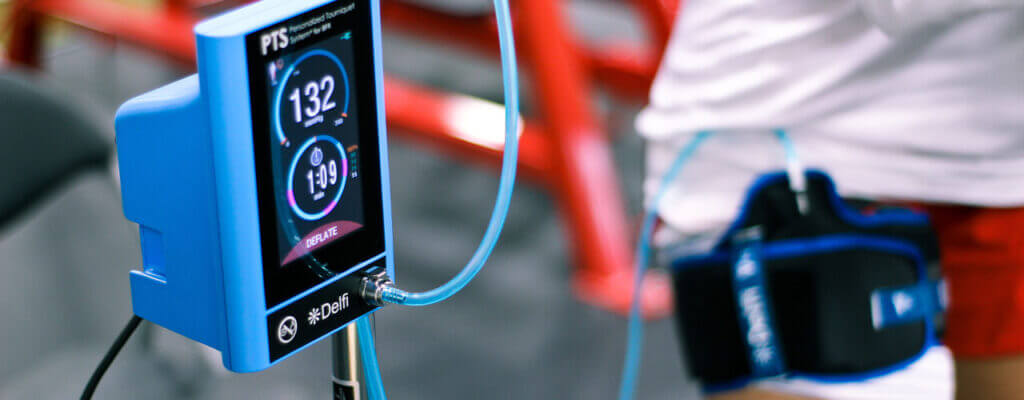How Exactly Does Blood Flow Restriction Work?
The compression devices used during blood flow restriction treatments are similar to blood pressure cuffs. The difference between standard blood pressure cuffs and the Delfi Personalized Training System (PTS) is the monitoring system. In order to perform exercises safely, the cuff automatically adjusts its inflation to maintain a safe level of occlusion (compression) throughout the exercise. The pressure created by these compression devices is high enough to occlude blood flow at 50-80% within the affected muscles.
Blood flow restriction is based on a popular theory that the treatments lead to a “local hypoxic event,” meaning the tissues in the affected area will be temporarily deprived of oxygen. While this may sound intimidating, the local hypoxia actually helps in accumulating more metabolites, in order to regulate the body’s anabolic response system (also known as the way in which the body gains muscle protein) during exercise. Essentially, restricting the blood flow in the affected area helps to build more muscle protein.
Additional Physiological Responses To Blood Flow Restriction Include:
- Increased anabolic growth factors
- Fast twitch fiber recruitment
- Muscle fiber synthesis
- Heat shock proteins
- Nitric oxide synthase
- Decreased expression of myostatin


